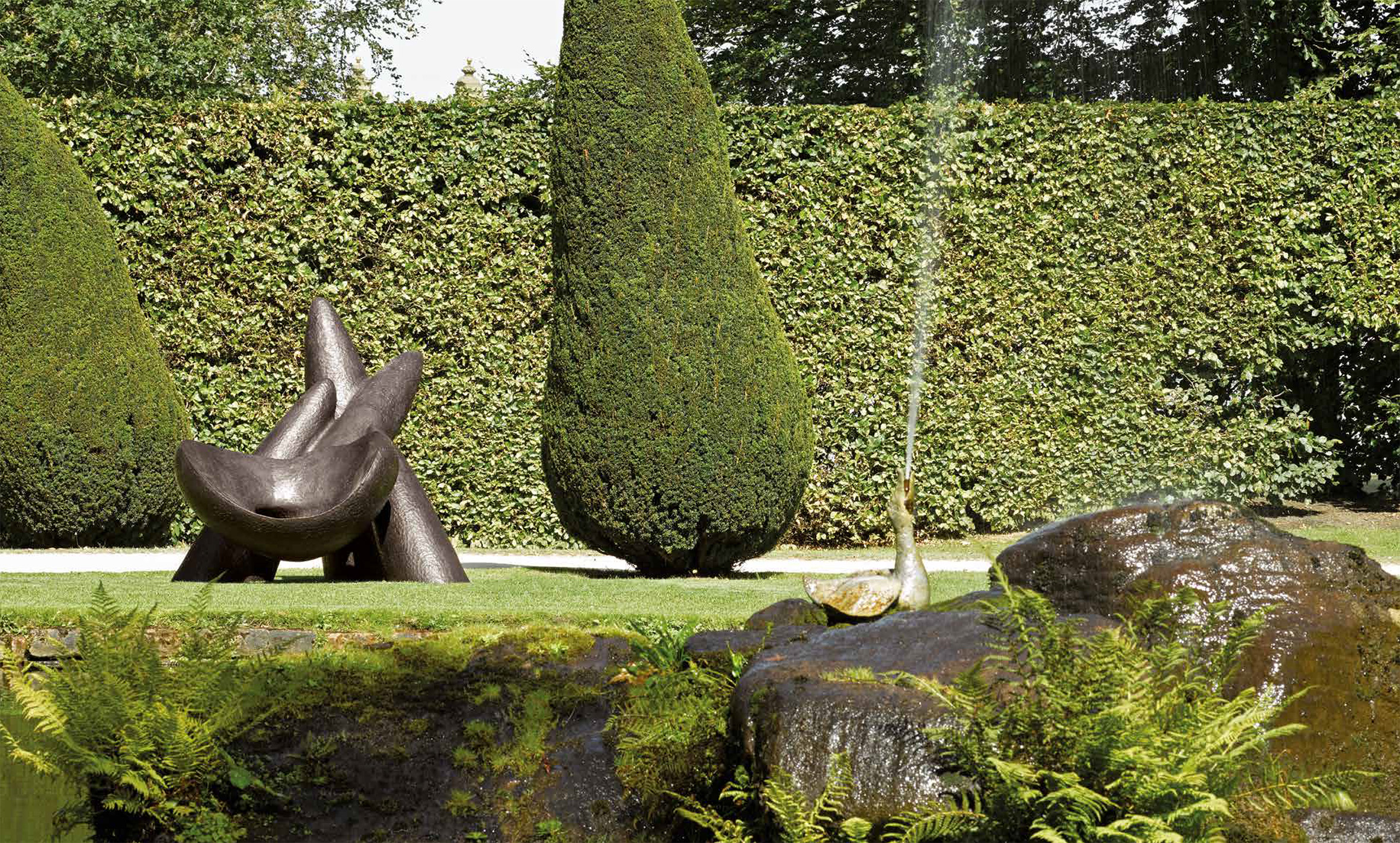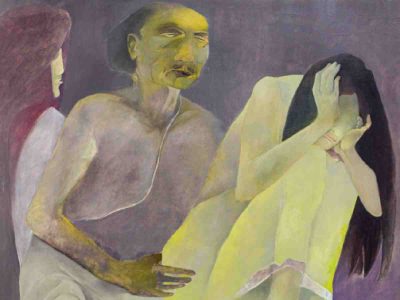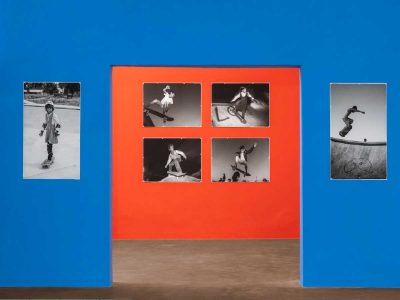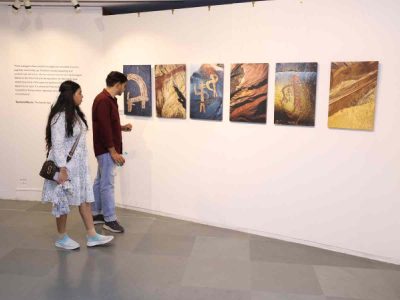The India Art Fair (IAF) 2024 at the NSIC Grounds in the capital has leapfrogged into becoming a melting pot of ideas — whether it is the façade created by design aficionados Jiten Thukral and Sumir Tagra or Gigi Scaria’s elevator, which takes you on an interesting upward journey without moving.
Thukral and Tagra work collaboratively with a wide range of media including painting, sculpture, installations, interactive games to video, and their façade is being repurposed into collectable bags by Sudheer Rajbhar of Chamar Studio, a Dalit-run fashion brand that crafts bags out of recycled rubber.
Sudheer says, “We don’t want the tent in which the fair is being held to go waste, once it is over. The flex will be converted into bags. It will be mixed with canvas and rubber to give the material strength.
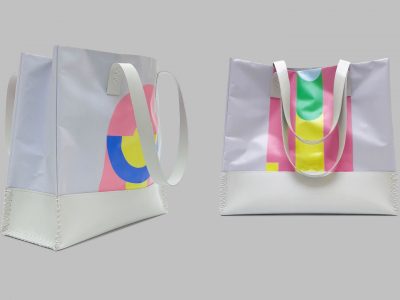
Born in a Mumbai chawl, Sudheer won a scholarship to study art and then launched Chamar Studio, cruelty-free and waterproof.
“We were abused, called chamars as children. The name stuck in my head. The label is an outcome of my life’s experiences,” says Sudheer, who created a product in 2017 that was close to leather in its properties but made from recycled rubber.
Animal skin was earlier repurposed into leather bags, but after the government ban on cow hide in 2015, the ostracised Dalit community was left unemployed. Sudheer used their skills to create an artisanal brand that channels circular design.
Thukral and Tagra’s ‘Mimesis’ (Greek verb meaning ‘to imitate’) for IAF, 2024, has 476 unique artworks. It is an extension of their recent series of works, ‘Arboretum’ or a variety of trees.
“Like the seedlings, these fragmented canvases with coloured pixels embark on an infinite journey of visualising data as an artistic endeavour,” says Tagra.
The duo wanted to imagine units, as we all think of a collection in terms of date, time, artwork, audiences, artists, and patrons.
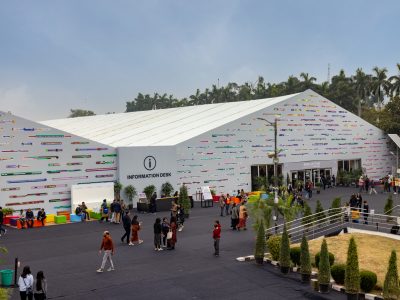
“We see these unique numbers as data sets that have passed through IAF in the past 15 years, and converted them into artwork,” they add.
The ‘Chamar Studio X Thukral and Tagra’ bags come armed with the former’s signature stitch.
Brass is class
Vikram Goyal is not your ordinary designer. He studied chemical engineering at BITS (Pilani), and then went to Princeton on a scholarship where developmental economics became his passion.
No one from his family was entrepreneurial; maybe he got it from his grandfather, who was a collector of fine artworks. That’s why Goyal’s studio is a mecca of ideas, where he works with this ‘romantic notion’ of making natural materials malleable.
Twenty years ago, he left his plush job at Morgan Stanley and returned to India thinking of what next? The affluent class was looking at international brands to buy design décor, but Goyal wanted to promote Made in India things with cultural heritage, using the abundance of craft, allowing room for creativity.
“There are two aspects to design—- first is ‘utility’ where you create a table or screen, then the other is art, non-functional, one-of-a-kind, making it collectible,” says Vikram.
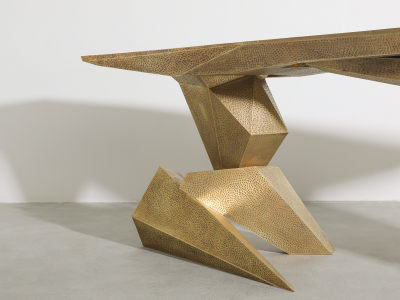
His collection this year titled, ‘Silken Passage’, pays tribute to the Silk Route—China to Turkey and Italy, in hammered brass, his metal of choice using the French Repousse technique.
“Neither am I an architect nor a designer, but I run a design workshop, where we have artisans, who push the boundaries of an adopted craft. My karkhana (workshop) allows you to dip into any craft, and give it new life,” he says, as he displays imposing Sakura trees and bamboo plants made out of brass.
Brass was a material used extensively in ornate ancient temple doors, ritual vessels — it is a versatile “legacy” material, plus it lends a gold-like sheen to the objet d’art. The future is about a more affordable online brand that he will launch soon, adding other materials in his design vocabulary from rope, cane, cotton, to block printing and creating magical pieces of art to be savoured by a digital-savvy generation.
Michelangelo Foundation
Richemont is one of the richest groups in the world that owns brands from Cartier to Panerai and Van Clef and Arpels.
They have started the Michelangelo Foundation which is run by two luxury giants — South African billionaire, Johann Rupert, the chairman of the Swiss-based luxury-goods company Richemont, and Franco Cologni, Chairman of Cartier International. The foundation supports global and local art driven community programmes.
Gunjan Gupta, a Central Saint Martin, London, graduate, who owns Studio Wrap, had an interesting talk with Andre Tomasi, Editor-in-Chief and Art Director of Homo Faber.
Michelangelo Foundation promotes craftsmanship and represents artisans in 47 countries. Additionally, it organises in Venice the prestigious annual fair Homo Faber (meaning ‘the man the maker’ in Latin). Gunjan’s gold leaf artisanal furniture is a prized possession for many, including the Swiss-based company Richemont.
“It is made with beaten gold, and comes out without joints almost seamlessly. When I started working with the 24 karat gold leaf artisans, many had left the generational work. It is a fast-disappearing craft and is only pursued by a handful of families,” said Gunjan, who’s famous muda (stool) throne represents bicycle-borne sellers of woven mudas that you see daily trying to sell their wares.
Andre commented on how craft is now fashion, serenading the younger generation as it represents a cultural identity.
“In India, you cannot escape craft, you are surrounded by it. Craft is about time and respect for artisans, and gives these invisible faces a definitive voice,” says Andre.
Carpenters Workshop Gallery, London
Loïc Le Gaillard studied corporate finance in the UK, and never did he think about galleries as his life was about numbers and trading in the cosmetics industry for 12 years. He was mesmerised by art, so in 2006, he took the proverbial plunge and with Paris-based partner, Julien Lombrail, launched the Carpenters Workshop Gallery in London’s Chelsea.
The duo went to the Royal College of Art and the Eindhoven Academy and got many student artists on board. They also worked with greats like Dutch artist Joep Van Lieshout from Atelier Van Lieshout.
“We started out with the idea that a piece of design must be focussed on form rather than function. No one needs another dining table or chair. We require an engaging story and artists must express themselves through their chosen medium,” says Gaillard.
Thus, you can see his pieces like the Tree Lamp and Cinderella Table. The Verhoeven Twins’ Cinderella Table fuses marble forms reminiscent of fairy tales with traditional shapes plucked from the history books like the techniques used in stone column carvings.
“During Covid, we spent a lot of time at home, hence the desire to invest in interiors. Most buyers wanted to match incredible furniture with the art on the walls they invested in, and that’s where we came in and helped,” he smiles.
Design, for him, is interpretation of an artist of things which are commonly used in daily life. He takes it a notch higher by further investing in its functionality. “We take good design for granted,” he confesses.
“The challenge in this trade is to come up with something new and bigger,” he believes.
There is no problem in ‘repeating messages’ and not falling into the ‘always more’ trap.
Wendell Castle, American sculptor and furniture maker, referred to as the ‘father of the art furniture movement’ has been his inspiration.
He thinks of himself more as an artistic director.
Elevator Is not stuck
The ‘Elevator’ seems to be the most popular exhibit at the IAF as it takes you on a ride without you moving; only the images being bombarded in the background change. The elevator is a staple of high-rise buildings that are now an integral part of urban landscapes.
Artist Gigi Scaria’s “Elevator from the Subcontinent”, presented by the Kiran Nadar Museum of Art, is a metaphor of the fast-paced life we all live in cities where everyone seems to be in a tearing hurry.
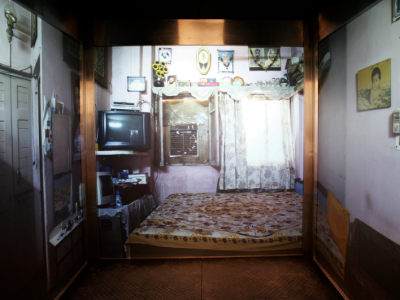
The elevator, for Gigi, a migrant when he came to New Delhi from his native Kerala in the late 1990s, is a metaphor of how he had to find a new home more than once as a tenant in an unforgiving city.
The elevator travels through different levels, each one displaying different living spaces, representing various hierarchies of society.
Warning: It is time
“I will not have that second of realisation or warning that a hearing person has. There is a part of me that feels I will be blindsided in my meeting with death. I will not hear death whisper in my ear…it is time,” says ace print maker Janhavi Khemka, who lost hearing-speech, but found a voice through art.
Varanasi born and Chicago-based artist, Janhavi studied at Banaras Hindu University and then Santiniketan. Her parents ran a sari business, which she could not take care of.
Due to typhoid, she lost her hearing when nine months old.
“My mom used to sit on a chattai (mat) and teach me how to speak, through vibrations of lip reading. My mom died of cancer when I was 18 and that changed my life forever,” she says.
In 2017, she moved to Chicago to complete her masters and take forward the art of woodcut printmaking, to develop three-dimensional works, like the digital carpet she has displayed at the IAF.
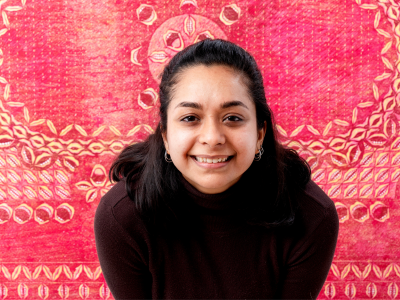
“If you stand on the carpet, you can feel the vibrations, and the installation mimics my room in Chicago where I was alone during Covid facing severe fear and anxiety,” she says.
Being deaf, she would often be told by the landlord to keep the voice down, but because of her impairment, she couldn’t control the volume of her washing dishes or cleaning the home.
Interestingly, another artwork shows her talking to Siri when alone in her room, almost trapped.
“Siri is like my world. I would like to talk to Siri and would inform them that I am deaf, but I am not mute. But Siri never understands me. So, I repeat myself over and over. It combines my seriousness, irritation, and persistence with the idiotic good natured-ness of Siri. It has no resolution,” she concludes.
The title of her work “Letter to my mother” brought by Emami Art to the IAF, is a mix media Installation with video projection of stop-motion animation made from 5 colour woodcut prints, sound, and vibration in plywood platform.
“Now, I’m writing a letter to my mom, but she no longer exists in my world. I recorded my voice reading the letter and captured the vibrations inside a plywood platform, and created an animation using woodcut prints. People can interact with the platform in whichever way they want — they can sit, walk, lie down, and even touch it to feel the vibrations,” she adds.

